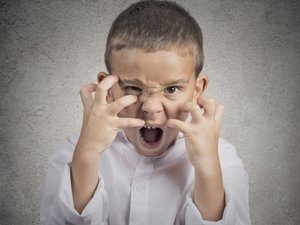Students With Challenging Behaviors Struggle With These 8 Things
“The student that disrupts the learning of others, makes your life miserable, uses unking language, and is the most difficult to like – is the one that needs you the most!” -Dr. Bryan Pearlman
A student with challenging behaviors can negatively impact a classroom environment and in some cases an entire school. These disruptions can present safety challenges and prevent the student (and other students) from accessing the curriculum. There are a variety of causes of these behaviors, many of which are mental health, trauma, or environmentally related. Regardless of the cause of the behaviors, these situations require careful planning, compassion, and skill.
A positive in dealing with children with challenging behaviors is that there are many strategies, tools, and interventions that have been implemented successfully to help reduce the behaviors and help improve the present and future outlook for the student.
Students with challenging behaviors generally struggle with:
1) Engine Always Running High & Short Fuse
The student arrives at school already at a level 7 or 8 on a scale of 10. This would be considered the student’s norm or relative calm. The challenge with this is that any minor setback, annoyance, frustration, disappointment or change can set this student off and in a big way. The student’s reaction would be thought of as an extreme overreaction to a minor item.
2) Limited Coping Skills and Tools
The student has limited coping skills and few tools to use when frustrated, upset, annoyed or disappointed. As a result of having limited coping skills and few tools, the child reacts in a negative way. This may involve physical contact with staff or students, destruction of school work or other objects, use of inappropriate language, refusal to follow directions, and eloping from the classroom, area and/or school.
3) Lack of Ability to Self-Regulate
The student has limited or no ability to self-regulate emotions and/or calm down when they are frustrated, upset, annoyed, disappointed, or make a mistake. This situation may involve crying, shutting down, physical contact with staff or students, destruction of school work or other objects, use of inappropriate language, refusal to follow directions, and eloping from the classroom, area and/or school.
4) Negative Thinking & Lack of Hope
The student has negative thoughts and is lacking hope. This may be as a result of a difficult home life, trauma, or past disappointments. These negative thoughts interfere with the student’s ability to complete school work, establish healthy relationships or take positive educational risks.
5) Fixed Mindset & Inflexible
The student has limited ability to “go with the flow” or accept change in an appropriate way. When faced with an unexpected change, this student reacts by shutting down. The student becomes unable to problem solve or discuss what they are feeling.
6) Poor Peer Relations and Difficulty Making Friends
The student may have exhibited inappropriate behaviors that make other students scared or reluctant to interact with them. In addition, the student may have poor social skills that further prevent existing peers and new peers from wanting to become friends with them. The lack of friends makes the student’s situation more difficult. Adding to the student’s challenges, is a feeling of isolation and potentially a negative outlook.
7) Difficulty with Introspection & Empathy
The student has limited ability to reflect and articulate about feelings, emotions, and/or actions. This relates to those internally and those in others.
8) Lack of Social Skills
The student may have difficulty with social skills. This makes engaging in conversations, working appropriately with adults, and being accepted by others. The lack of social skills also has the potential of escalating situations, due to the student’s inability to accept “no” for an answer, disagree appropriately, or appropriately respond to an adult.
Strategies to use when working with a student with challenging behaviors:
-Stay calm
-Work as a team to problem solve and create a safety plan
-Be proactive
-Document (before, during & after)
-Do not take things personally (it is not about you)
-Focus on and reward the positives
-Create a safe and quiet space in the room and also a buddy classroom
-Teach social skills
-Identify the captain of the team (critical friend) to build relationships, daily check-in/out
-Use fewer words
-Include stakeholders and student in creation of a plan
-Incorporate daily movement and mindfulness activities
-Practice self-care
-Out of the box thinking
-Incorporate movement and mindfulness items
-Monitor progress & modify plan as needed
-Clear and concise rules and expectations
-Plan for regular and frequent breaks
-Plan for transitions and changes in schedules/routines
-Focus on behavior not the student
-Listen and look for triggers
-Help identify and implement replacement behaviors
-Build the bank account with student and family with positive interactions
-Involve therapy and mental health resources
-Build hope for the future
-Give more responsibility than what is deserved
Dr. Bryan Pearlman is the founder of Most Valuable Professional Development, LLC (MostValuablePD.com). He has served as a teacher, principal, and professor. Dr. Pearlman is on a mission to positively impact 100,000 educators and a million students by providing professional development and webinars on trauma, challenging behaviors, differentiation, and ensuring that all students reach their potential.
You can reach Most Valuable Professional Development (MostValuablePD.com) at: 314-323-7340 and bryan@MostValuablePD.com.



June 30, 2018 @ 6:17 pm
Good guidance. We have been working with the educational applications of the Process Communication Model and have found that students whose communication preferences match their teachers’ tend to have fewer classroom problems. Those who are less like their teachers “miscommunicate” and have more difficulty connecting with their teachers and the teacher’s preferred instructional delivery style. Our research over the past years shows a significant difference in classroom performance.
July 1, 2018 @ 2:33 pm
Thank You
July 1, 2018 @ 2:58 pm
You bet! Take care!